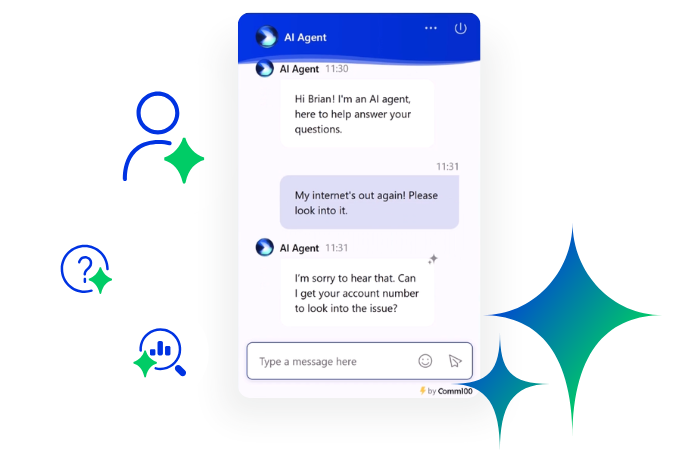Social media. The ultimate double-edged sword of customer care.
On the one hand, social media provides businesses with a premier location to engage with customers, address emerging problems, and discuss service improvements. On the other hand, social media can be a shaming ground where negative reviews easily go public or even viral.
Bad Reviews Can Happen
Although social media gives businesses an incredible amount of agility for customer care, it’s hard to please everybody. No business gets it right 100 percent of the time, and even those that come close can’t account for those misplaced blames.
The bottom line? If you’re a social business (as you should be, in this day and age) you have to know how to handle customer reviews on social media.
Easy enough when things are going well—it doesn’t take much effort to thank customers for good reviews or give them a digital thumbs up for their positivity. No, what you must learn is how to address those negative social media reviews.
Don’t worry; negative reviews aren’t always a bad thing. Look at them as an opportunity to build on your customer relationships. Nothing looks better than a brand that isn’t fazed by a customer’s angry rants, and brands that gracefully handle social media negativity are the brands that build lifetime loyalty in their customers.
With that in mind, let’s take a look at the most important principles for keeping you cool when your customers turn up the heat:
- Control the damage
Online reviews are powerful. Statistics compiled by Invesp show 88 percent of consumers trust online reviews as much as personal recommendations. Couple that with the 86 percent of respondents who hesitate to purchase from a business after seeing bad reviews, and the value of social media reputation management becomes clear.
The first step in dealing with any crisis is damage control. If a customer brings up a problem on social media, your first priority should be addressing that issue.
Was the problem your business’s fault? Apologize.
Was the problem unrelated to anything your business did? Apologize.
Did your customer actually cause the problem himself and then blame it on you? Apologize twice.
See a pattern here? No matter the situation, your brand will probably end up apologizing. The customer is always right, after all, and negativity spreads like wildfire on social media. According to data by Dimensional Research, 95 percent of respondents who had poor brand experiences told someone about it and were 50 percent more likely to talk about it online than those who had good experiences.
Address your irate patron as fast as possible to prevent further outbursts. You can’t stop the damage that’s already been done, but do what you can to stop the spread.
- Get out of the public eye
After saying your mea culpas, the best course of action is to take the discussion off the public forum. It’s important to note that before going private, you must respond publicly first. Even if you satisfy your cross customers behind closed doors, their unhappy and unaddressed public comments will remain as a badge of shame.
Having said that, you can’t dig into the real meat of the customer’s problem on a public board. Customer information is privileged, and it should be addressed in a one-on-one discussion. Plus, moving the conversation to a private forum guarantees that any further ranting won’t be visible to other online viewers trying to form an opinion about your brand.
- Make it up to them
Here’s where things get a little trickier. Apologies are great, but few customers will be placated by words alone. To really turn your detractors back into fans, you have to go the extra mile and prove to them that they’re worth it to you.
If you’re in food service, this might mean offering comp-ed items or coupons. Retailers may offer special discounts on certain items or replacements for defective merchandise. Service providers can offer discounted services, upgrades to service packages, or complementary gifts.
“Making it right” can take many forms, depending on your industry. What’s important is that you do something to back up your words—and reaffirm for your customers that you value their patronage.
Mistakes to Avoid
Knowing what not to do is just as important as what you should do. As we said, there’s a right way and a wrong way to handle negative social reviews. Here’s a quick primer of things to avoid at all costs:
- Don’t ignore them.
The fast-moving pace of social media gives some businesses the impression that bad reviews will merely sink into the background, but don’t be fooled. People don’t forget when they get snubbed by a brand. You wouldn’t ignore an angry customer in your store, and you shouldn’t ignore angry customers online.
- Don’t delete the offending comment.
It’s tempting to remove any blemishes to your reputation that upset customers might be spreading around, but deleting the comment is a bad move. If you think you’ll lose customers from one bad review, just wait until word spreads that you’re purging all negative mentions of your brand. This is dishonest, and customers will not be impressed.
There are exceptions to this, of course. If a comment is vulgar, libelous, or just a downright lie, it’s fair to preserve the integrity of your brand by deleting it. Be cautious, though—you can’t afford to lose the trust of your customers by removing authentic comments with valid complaints.
- Don’t get snippy in turn.
Angry customers aren’t always reasonable, and they aren’t always fair. This doesn’t give you free reign to respond in kind, though.
Check out Amy’s Bakery for an example of how not to do customer service. After receiving negative reviews of their products and service, the purveyor of pastries famously responded with the following:
“You people are all s—. Yelp s—, Reddits s—. Every s—. Come to here, I will f—— show you all.” Here’s a rule of thumb: If half your response needs to be censored to be posted on a family-friendly blog, you’re not cut out for customer service.
Social Reputation Management
Social media is still relatively new in the business world, and plenty of businesses still don’t have the hang of it. Any business leveraging the benefits of social media should know how to handle the pitfalls that it brings. Improper social media management can be worse than no social media presence at all.
When in doubt, always remember the following when handling customer reviews online:
- Address customer concerns publicly
- Continue the discussion privately
- Go the extra mile to make them happy
If you keep these three principles in mind, even the worst customer reviews won’t crimp your social media style.
Download now: 101 Ready-to-Use Live Chat Scripts for Both Sales and Customer Service
The downloadable contains scripts for all kinds of scenarios, ranging from greetings to collecting personal information, and can help your live chat team deliver more efficient, quality support immediately.
Download Now
eBook







